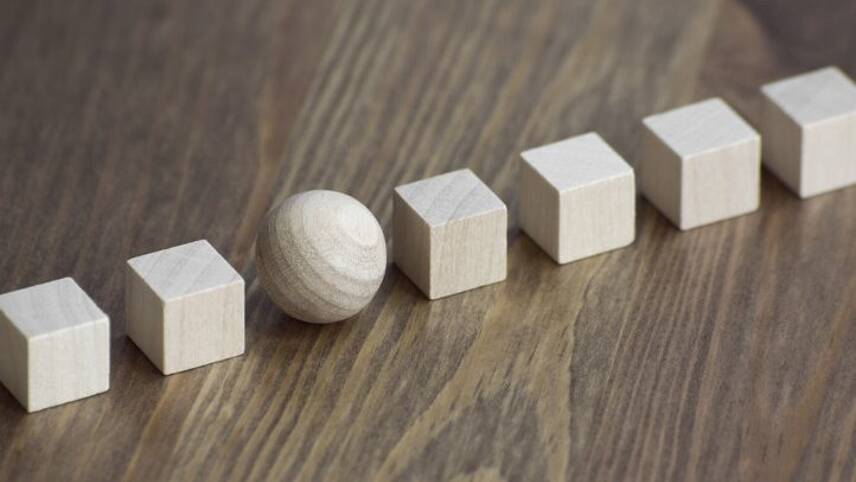Register for free and continue reading
Join our growing army of changemakers and get unlimited access to our premium content

It’s been an intense year of circular innovation and Design for me which has included: pioneering work on Winnow Solutions’ world-first AI-enabled smart scales that help commercial kitchens be more profitable and sustainable, recent work on a circular innovation discovery project for a US beauty brand, plus running Circular Sprints, Hackathon’s and Thinkathon’s galore (even for edie).
As the summer draws to a close, I wanted to note down some circular lessons learnt from all this, in the hope it may push the agenda on a little. Here are my three BIG learnings on circular innovation:
Go beyond Ecoredesign
Earlier this year, one project specified that ideas needed to look ‘beyond ecoredesign’, perfectly capturing our first learning; that circular innovation is a breakthrough agenda – you need to think big and think differently in these projects.
This will not be delivered by, for example, simply switching a ‘wasteful’ packaging material for a bio-based, renewable alternative. It will also not simply be about making a durable product easier to disassemble and recycle. Nor will it just be about cutting a few grams of weight or waste from the design of industrial products.
Going beyond ecoredesign means radical innovation, not renovation. It’s about new, not existing stuff, requiring revolutionary, not just evolutionary approaches. It’s about returning to the first principles of the functions, results and needs that products’ satisfy and thinking about the wider systems in which products and services operate – this all needs a much more innovative mindset and approach.
This can mean: rethinking personal care products to design-out wasteful, single-use packaging, developing new business models to lease or rent electronics or gaming devices (instead of buying and owning them), or designing completely new sportswear products for 100% closed-loop recycling. Rather than metaphorically pushing your current portfolio up ‘Mount Sustainability’, circular innovation requires us to stand at the top of the mountain and gaze down to imagine a completely new generation of products and services for a circular economy.
See circular innovation as a disruptive agenda, which goes beyond incrementally improving what exists today to create completely new ways to satisfy people’s needs profitably.
Retrospectively back-fill customer insight and/or benefit
Conventional innovation wisdom suggests that you never start an innovation project without a clear customer insight or benefit. This is both the trigger and red-line through the process to ensure commercial success at the end, following decades of purely technology or financially-driven innovations that fail to satisfy a real customer need.
Yet many circular innovation projects are led by a waste or resource problem, where the customer benefit is, at best, ill-defined. But all is not lost; it is possible, even necessary, to retrospectively back-fill the insight and benefit later-down-the-line, once ideas crystalise and concepts are created.
Environmental and social goals will not always be customers benefits but that does not invalidate circular innovation. On the contrary, it just means you have to work harder and more creatively towards the end.
Think about how this works: renting or sharing stuff (collaborative consumption) can be better value, giving you more affordable access to products and services previously out of reach (benefit = cost/access), ordering refillable packaging online via direct delivery can be easier and less hassle (benefit = convenience/access), whilst driving a Tesla can position you as a cool innovator and early-market adopter (benefit = prestige). Importantly, all these have both customer and circularity benefits working together which circular innovators ignore at their peril.
Start with circular innovation goals, define the insight along the way and then the benefit once winning ideas and concept solutions start to emerge.
Front End Circular
The terms circular innovation and circular design are used loosely today, but I don’t believe they mean the same thing. Simply put, innovation is the ‘front-end’ bit that’s about getting the idea right in the first place, while the design is about turning that idea or blurred vision into reality.
In my view, circular innovation is the classic fuzzy front-end project, best done at the early stages of development, where there are high degrees of freedom and longer time horizons. This is important for how and where you manage the process.
Design projects can have important decisions already specified in the brief, so you can’t tackle circular innovation systemically. Integrate this too late in development and you risk rejection or failure. You often don’t have the certainty or clarity to design things yet, so you must identify where circular innovation can live and flourish in your business. This may mean paddling circular innovation ‘upstream’ to an R&D or strategy setting, or housing it in a discovery context, an Incubator, Lab or Skunk Works, or as a one-off pilot initiative initially.
Conduct circular innovation at the early stages of your development/business process and give it time to breathe.
These are three circular innovation learnings from this year which I’ve now integrated into the circular innovation Sprint: my universal process to unearth breakthrough ideas and opportunities fast.



The natural world has 4 billion years’ experience of what works, what lasts and what is beautiful. Perhaps we should work in harmony rather than in conflict with her. It’s called "Biomimicry